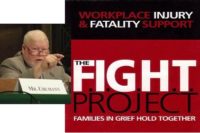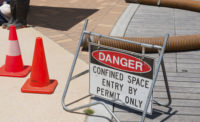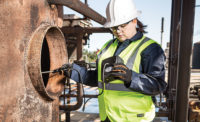Posted with permission from Confined Space, a newsletter of workplace safety and labor issues.
All preventable workplace fatalities make me mad, but none make me madder than trench collapses and confined space fatalities. There is no reason for any of them to happen. The hazards of trenches and confined spaces are well known and there are good OSHA standards that would prevent these deaths if followed.
The first fatality I ever investigated at AFSCME was a confined space fatality in a Decatur, IL wastewater treatment plant. Wastewater treatment plants and sewer systems are notorious for confined space dangers because decaying sewage produces hydrogen sulfide, methane and oxygen shortages. But that was 1983, before OSHA had a confined space standard and before Illinois had a public employee OSHA law.
But here we are 34 years later: 2 workers killed by gas at Miss. waste-water lift station.
Now I don’t know what happened here. Did one worker go down and pass out, and the other one go down to rescue him? It’s possible. Turns out the victims were father and son, 45-year-old Terry West and his 20-year-old son Gage West. This phenomenon is unfortunately not rare. Until OSHA issued its general industry confined space standard in 1992, more rescuers died than original victims. And yet these cases continue to occur: One by one, 3 utility workers descended into a manhole. One by one, they died.
OSHA’s general industry confined space standard was issued in 1992, but the agency didn’t get around to issuing a confined space standard for construction workers until 2015. Confined spaces are work areas that (1) are large enough for an employee to enter, (2) have limited means of entry or exit, and (3) are not designed for continuous occupancy. They often have atmospheric or other hazards and can kill workers in minutes.
If a confined space is suspected to be hazardous, employers must designate it a “permit required confined space” and workers must be trained. The atmosphere must be tested and ventilated if found to be hazardous, and there must be special procedures for rescue. The construction standard also has requirements that ensure that multiple employers share vital safety information and to continuously monitor hazards.
And it’s a good thing OSHA issued the construction standard in 2015. If it had been issued this year with Trump’s “one in/two out” Executive Order, OSHA might have had to remove protections for two other standards: maybe general industry workers in confined spaces don’t need protection any more. And we need to get rid of one more. Maybe the OSHA standard protecting workers from trench collapses?
OSHA’s Confined Space website can be found here.
Click here to visit Confined Space.


